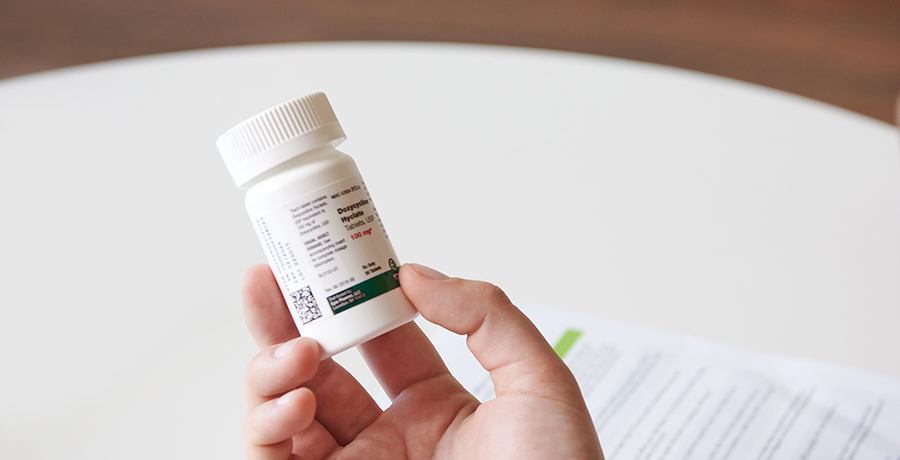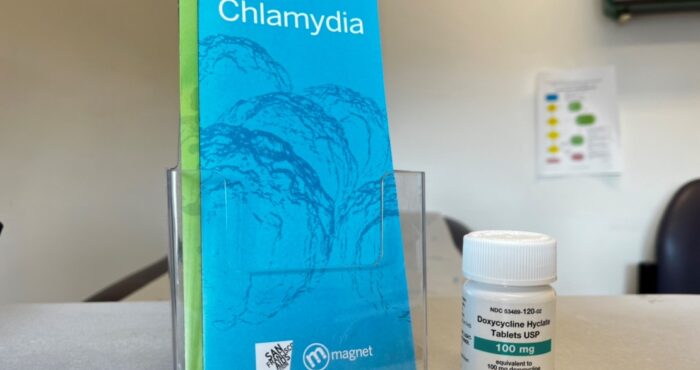Yes, doxycycline prevents STIs in cisgender women too

When guidelines for using doxyPEP were finally issued by the CDC last month, after an eight-month consultation period, they were only recommended for gay men and trans women.
Taking a 200 milligram (mg) dose of the antibiotic doxycycline after sex to prevent the common bacterial sexually transmitted infections (STIs) chlamydia, gonorrhea and syphilis – known as doxyPEP – stopped two-thirds of the three infections, the biggest randomized study in the US found.
That’s a bit misleading, because while the efficacy of doxycycline against chlamydia and syphilis was 87-88% in HIV negative people (a little lower in people with HIV), it was only 55% for gonorrhea, stopping barely more than half of infections. This is because the gonorrhea bacterium finds it easy to develop resistance to antibiotics, unlike the other two organisms. But that was still useful enough to allow the CDC to authorize it for gay men and trans women.
Not so for cisgender women. Up till yesterday we’ve only had results from one study in women, and in that one, conducted in Kenya, doxyPEP didn’t work. There were 50 infections by the three bugs in cis women given doxycycline to take and 59 in cis women given placebo pills – not a significant difference.
At the International AIDS Conference in Munich, Germany attendees heard that another study in women found an efficacy averaged over all three infections of 67%. The efficacy against chlamydia was similar at 65% and it was 55% with gonorrhea. (Although this is the same as the efficacy against gonorrhea in the USA gay/trans study, it could have been due to chance, as this was a much smaller study. But it still contributes to overall efficacy). As for syphilis, an 8% annual incidence rate prior to taking doxycycline turned to zero infections in the cis women taking it.
This was a very different study to the one conducted in Kenya. For one, it took place in a country we don’t hear from much in prevention studies – Japan. Secondly, it was conducted exclusively in sex workers. Thirdly, it was much smaller. While there had been 449 participants in the Kenya study, and 501 in the US gay/trans study, there were only 40 cis women providing data to the Japanese researchers. Fourthly, it wasn’t a placebo-controlled study – it was a before-and-after one. The infection rate of the three STIs in women before starting doxycycline – which was very high, with more than 2.3 infections diagnosed per person per year – was compared to the rate after starting it – which was 0.8 per person a year.
And lastly, it wasn’t a doxyPEP study, but a doxyPrEP one: the women took doxycycline every day, regardless of whether they’d had sex or not.
Dr. Seitaro Abe of Japan’s National Center for Global Health and Medicine told me: “These were women who were seeing clients nearly every day. The fact that they also took STI PrEP every day also meant, because higher levels built up in the tissues, that we could cut the daily dose down to 100mg, which might mean fewer side effects.”
Another thing people worry about with doxyPEP is whether, because it’s an antibiotic, whether it will interfere with our ‘good’ intestinal and genital bacteria. The study found doxycycline made no difference, good or bad, to two other conditions cause by internal organisms not susceptible to doxycycline, bacterial vaginosis and candida.
The 40 women, with an average age of 29, had in fact been selected from a larger group of 96 who were attending the Personal Health Clinic in Tokyo, a resource for sex workers. All women were offered a choice of doxyPrEP or doxyPEP, but only six of the 96 chose to take only post-sex (PEP) doses. They were excluded from the study, as were 50 women in which STI diagnoses both before and after starting doxycycline were not available.
But although there were big differences between this study and other ones, it is still the first to prove that doxycycline can work in cisgender women too.
Which leaves open the question – why didn’t in work in Kenya?
While it had been assumed that the answer was to do with the women’s adherence to their doxy pills being very low, that tells us nothing about why it was low. Just before the Japanese study was presented, Dr. Benn Kwach of Kenya’s Medical Research Institute relayed the feelings and comments of a subset of 40 women, average age 23, who’d taken part interviews a month after joining the study, at its midpoint six months in, and at its end a year after the start. Twenty-five women also took part in focus group discussions a year after the study ended.
Overall, one big theme stood out, and it connects with the Japanese study in that while that reduced its dose to try and avoid side effects, a lot of the Kenyan women complained of them. One woman said: ““I didn’t take the full PEP dose due to severe side effects. I had constant nausea and couldn’t eat without vomiting. It was too much for me to handle.” Another, who said she did manage to take the full dose, found a way round the side effects but said: ““I used doxy, and it made me feel very dizzy whenever I took it during the day. So, I preferred to take it in the evening, right before heading to bed.”
For the women who persisted in the study, their concerns shifted over time. Although side effects were still mentioned, the biggest concern of women interviewed at month six was stigma and privacy. One woman said: “When I am in a new environment, I start asking myself what will people think when they see me taking dPEP.”
By month 12, for the women who continued taking doxycycline, it had become rather more routine, such as their biggest concern was simply forgetfulness, especially if their normal routine was disturbed. Again, women worked out their own solutions to the barriers, such as by using small and easily-concealed pill purses, setting themselves phone reminders and so on.
But why did the Kenyan women find the side effects so much more difficult? Twenty-three per cent of the Japanese women mentioned nausea too, but nonetheless 73% never missed a dose, and a similar proportion said the doxycycline had reduced their anxieties about STIs.
From Dr. Kwach there was a sting in the tale of his presentation. In a comment after his main slide presentation, he said: “the study started in February 2020 and COVID reached Kenya a month later. The main lockdown period lasted for eight months. People couldn’t go out to work and the economy suffered. There was real food insecurity. I think a lot of these women were trying to take their pills on an empty stomach.”
Whether the CDC will see the Japanese study as enough evidence to recommend doxyPEP for women, or will want more evidence, remains to be seen.
References
Abe S. and others. Doxycycline PrEP prevents STIs without affecting vaginal bacterial flora in female sex workers. Abstract no OAC0803, 25th International AIDS Conference (AIDS 2924). Munich, Germany, July 2024.
Kwach B. and others. Understanding barriers and facilitators to doxycycline post-exposure prophylaxis adherence among young women in Western Kenya: a qualitative study. Abstract no OAC0802, 25th International AIDS Conference (AIDS 2924). Munich, Germany, July 2024.










